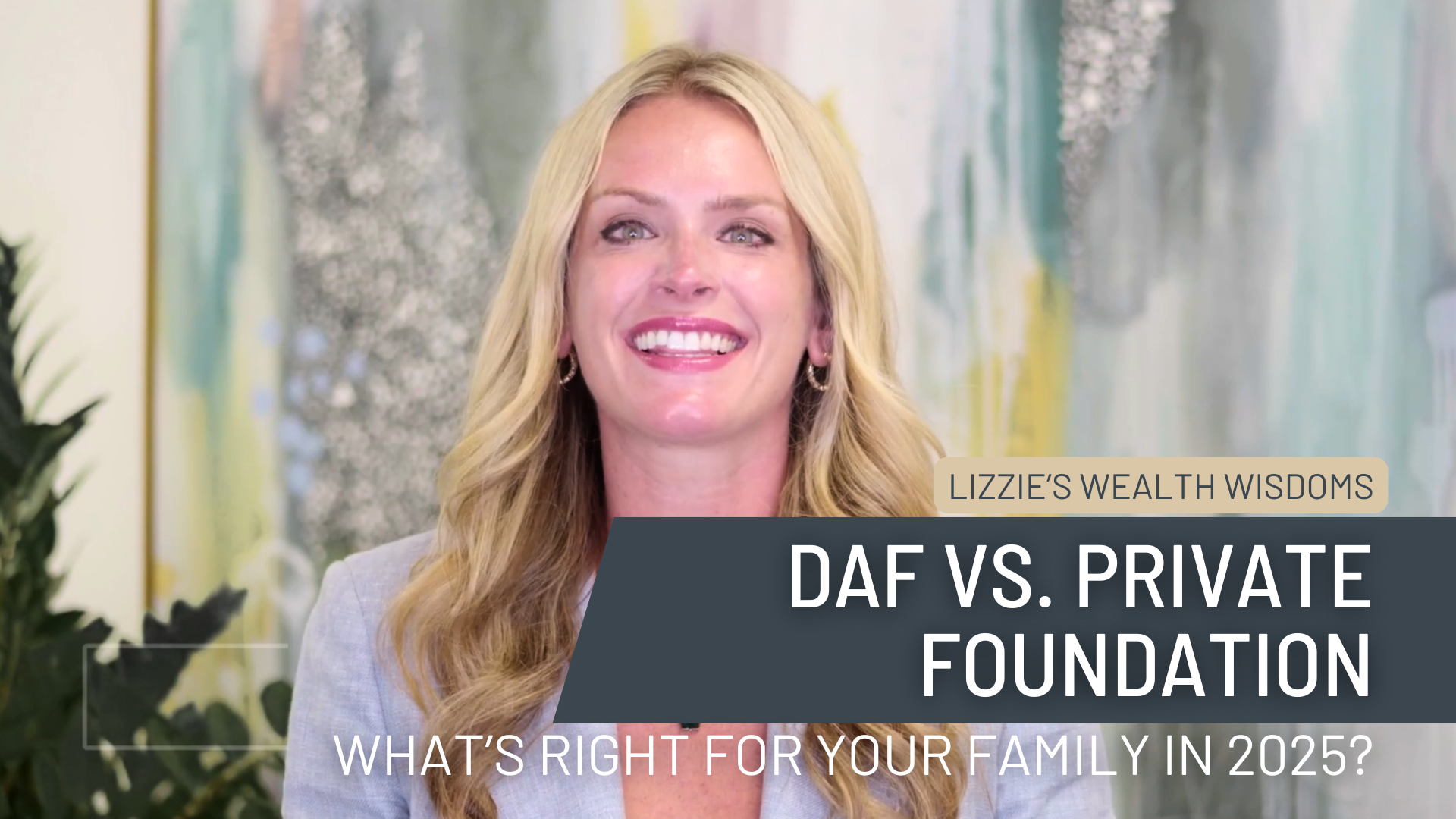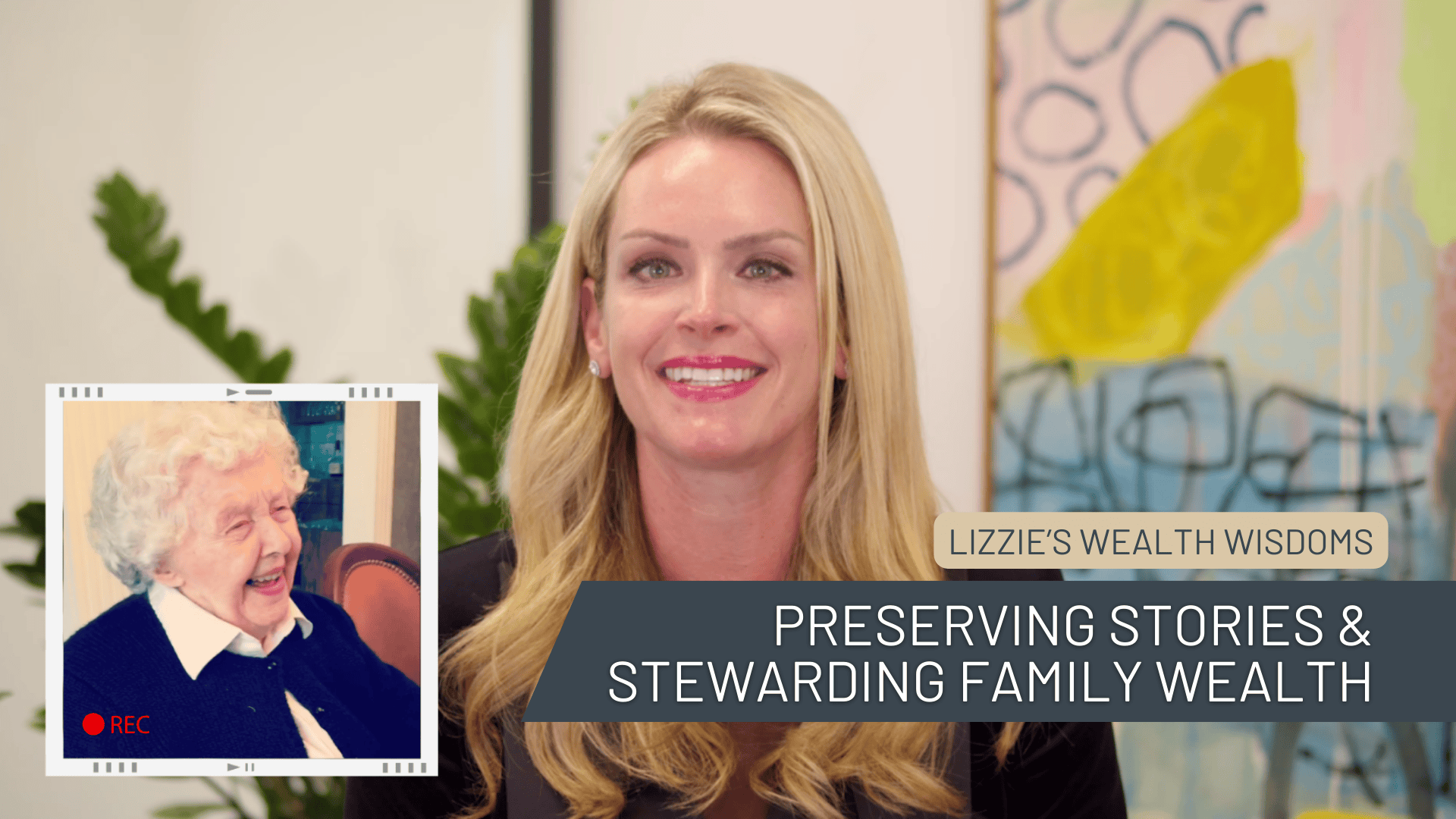DAF vs. Private Foundation—what’s right for your family in 2025?
This week on Lizzie’s Wealth Wisdoms, we’re unpacking:
• Control vs. simplicity
• IRS scrutiny
• Strategic legacy planning
Which giving vehicle aligns best with your values?
Watch the video below to find out! 👇
Transcript:
Welcome back to Lizzie’s Wealth Wisdoms. This is the podcast where we break down complex financial strategies for high-net-worth and ultra-high-net-worth families. So, today, we’re talking about a subject that is as deeply personal as it is strategic, and that is charitable giving. If you’re part of a family that prioritizes philanthropy, or if you’re thinking about your own legacy planning, you’re probably weighing your options between a donor-advised fund and a private foundation.
Both are powerful vehicles with different trade-offs, benefits, and responsibilities. And in 2025, with increased IRS scrutiny and changing policy debates, this is more timely than ever. So let’s break it down.
What is a Donor-Advised Fund (DAF)?
A donor-advised fund or a DAF is often referred to as a charitable investment account. You can contribute assets: could be cash, stocks, even crypto, and you get an immediate tax deduction.
And then you can grant the funds out to various 501(c)(3) charities over time. So some of the key benefits are number one, an immediate tax deduction. Two, no setup or ongoing maintenance burden. Three, the funds are growing tax-free within the account. And fourth, the minimums are very low often $5,000 to $25,000. So for many high-net-worth families, they love the simplicity of the donor-advised fund.
In so many ways, it is a set-it-and-forget-it strategy. And yet, you can still involve your children and grandchildren in the gift-giving process by allowing them to help recommend grants.
What are Private Foundations?
Now, let’s talk about private foundations. Private foundations are full-fledged nonprofit corporations that you create and control. You can appoint board members, hire staff, design custom grantmaking strategies, and even fund operating programs.
But there are some important trade-offs, especially when it comes to taxes. So, here is a big one. For cash contributions, a donor-advised fund allows you to deduct up to 60% of your adjusted gross income, where a private foundation halves that deduction to 30% of your adjusted gross income. That can be significant, particularly in a high income year, if you’re using charitable giving as part of a broader tax mitigation strategy.
Foundations also come with significant setup and legal costs, ongoing compliance and filing requirements, an annual 5% distribution requirement, and increased IRS scrutiny around self-dealing and operating costs. For a lot of ultra-high-net-worth families who want control and permanence, the trade-offs are worth it, but as always, it’s important to weigh the pros and cons of these two structures.
And then, particularly for private foundations, ensure that you have the right tax and legal team in place to structure it properly.
So, now, why is this conversation particularly timely?
We have seen recent attention from both lawmakers and the IRS about whether large donor advised fund accounts and private foundations are distributing enough to active charities. There are some proposals that would require donor-advised funds to distribute a minimum amount annually, similar to the 5% requirement that private foundations present face.
Additionally, donor-advised funds are facing scrutiny for serving as tax shelters, particularly if grants are not being made for many years after a contribution. Foundations are being challenged to prove that they’re not just vehicles for family benefit, particularly if they’re employing family members or using related parties for fund management. So if you’re considering setting up our scaling either structure, now is the time to review your giving strategy with your tax and legal advisors.
It’s important to think about control, mission privacy, and public perception.
So, how do you decide what is right for you?
To put it simply, choose a donor-advised fund if you want simplicity and lower cost, flexibility without the administration burden, and a way to engage the next generation early. Use a private foundation if you want full control over grant making and operations.
The ability to leave a lasting legacy that can span multiple generations. And really, if you want to do more sophisticated giving, including program-related investments or ongoing operational initiatives. And remember, some families do both. They’ll use a donor-advised fund for quick-turn giving and a private foundation for larger, legacy-driven giving. Remember that you can start contributions to a donor advised fund and a private foundation in a single high income year to reach the 60% deduction cap on your adjusted gross income.
In closing, charitable giving is deeply personal, but it’s also deeply strategic. Whether you’re leaning toward a donor-advised fund, a private foundation, or a hybrid approach. The key is to align the structure with your vision, your values, and your family’s long-term goals. Thanks for joining me today on Lizzie’s Wealth Wisdoms. If this sparked any questions or if you would like help tailoring a custom giving strategy, please reach out.
We love helping families align their wealth with the purpose. Please like, subscribe, and join me next time.




